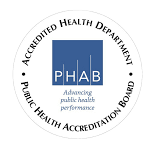Frequently Asked Questions - X-Ray
DOSIMETRY
Q: Do I have to monitor radiation exposure to facility employees?
Answer: Anyone who is likely to receive in one year greater than 10% of the maximum allowable occupational dose (i.e., 10% of 5 rem TEDE or 500 mrem) must be monitored. It is required that employees operating equipment with continuous exposure such as fluoroscopy or computed tomography be monitored.
If an estimated possible amount of exposure cannot be reasonably obtained, the Department recommends that personnel be monitored initially for a period of 3 to 6 months to determine anticipated exposure. If after this time exposure is negligible, use of dosimetry may be discontinued.
Q: How long do I have to keep dosimetry exposure records on file?
Answer: Dosimetry records must be retained by the licensee or registrant until the Department terminates each pertinent license or registration requiring the record; however, RH-2804.c.-e. delineates exposure reports that must be made available to workers upon termination of duties.
Q: In our facility, where should we place the dosimeter marked "control?”
Answer: This monitor is used to subtract "incidental" exposure from every monitor submitted. For instance, this monitor would provide evidence of any exposure from the environment or from irradiation of packages in transit. Therefore, the control monitor should not be kept in the x-ray room but preferably in a desk drawer away from sources of radiation.
Q: How often must I provide monitored employees with a copy of their personal exposure report?
Answer: Each licensee or registrant shall provide an annual report to each individual monitored under RH-1302. of the dose received in that monitoring year if: 1) the individual’s occupational dose exceeds 100 mrem (1 mSv) TEDE or 100 mrem (1 mSv) to any individual organ or tissue or 2) the individual requests his or her annual dose report. RH-2804.c.-e. gives other instances when an exposure report must be provided to a worker.
Q: Is it acceptable for our facility to generate annual notification forms rather than obtain them from the vendor?
Answer: Yes. That is perfectly acceptable as long as a copy of the form or letter is kept on hand and is available for review by State Inspectors.
INSPECTION
Q: How long does my facility have to keep patient images?
Answer: The Department guidance suggests that radiographs of patients be retained for five years except in the case of joint replacement films, which should be kept for 10 years. All diagnostic images of minor children should be retained until the time of the child's 18th birthday. Mammography images are to be retained in accordance with MQSA standards.
Q: Can I store patient images in the x-ray room?
Answer: The Health Facilities Services Section of the Arkansas Department of Health stipulates that patient images should not be stored where they could be accessed by anyone other than medical personnel.
Q: How do I schedule a State Inspector to come for inspection of my x-ray equipment?
Answer: Inspections are scheduled on a determined frequency, and the office of Radiation Control will contact you when it is time to schedule an inspection. The registration expiration date has no correlation to the inspection due date.
Q: What information should I have ready when the State Inspector comes?
Answer: All registrants must have the following ready for the Inspector: Notice to Employees, your current x-ray registration, and a copy of the Arkansas State Board of Health - Rules for Control of Sources of Ionizing Radiation (either hard copy or electronic).
Applicable programs also need the following: all dosimetry records for the previous year, your facility's radiation safety program material, Radiologic Technology Licensure for everyone performing radiography (unless exempted), your last Medical Physicist survey, and your patient log (either hard copy or electronic).
Q: Is our facility required to keep a logbook of patients x-rayed?
Answer: When an x-ray is used in a healing arts setting, according to the rules, “Each facility shall maintain an x-ray log containing the patient I.D., the type of examinations, and the dates the examinations were performed. When the patient or film must be provided with human auxiliary support, the name of the human holder shall be recorded." Either hardcopy or electronic copy is acceptable.
RADIATION SAFETY
Q: Do we need a Radiation Safety Officer or a Radiation Safety Program?
Answer: Regardless of how small the practice, whenever ionizing radiation is used, one individual should be tasked with ensuring that safe radiation practices are in place and that every affected employee receives appropriate training. This individual should be responsible to review all exposure records and report any overexposure to the Department. The extent of the radiation safety program should be commensurate with the type of equipment being used and the scope of practice at the facility.
Q: What is the rule concerning the holding of patients during x-ray examination?
Answer: When a patient or film must be provided auxiliary support during a radiation exposure: 1) Mechanical holding devices shall be used when the technique permits. 2) If a human holder must be utilized: Written safety procedures, as required by RH-1602.a.4., shall indicate the requirements for selecting a holder and the procedure the holder shall follow; the human holder shall be protected as required by RH-1602.a.5.; no individual shall be used routinely to hold film or patients; such holding shall be permitted only in very unusual and rare situations; in those cases where the patient must hold the film, except during intra-oral examinations, any portion of the body, other than the area of clinical interest, struck by the useful beam shall be protected by not less than 0.5 millimeter lead equivalent material; and each facility shall have leaded aprons and gloves available in sufficient numbers to provide protection to all personnel who are involved with x-ray operations and who are otherwise not shielded.
Q: Does our facility have to purchase lead aprons or other protective shielding?
Answer: New gonad shielding of not less than 0.5 millimeter lead equivalent material shall be used for human patients who have not passed the reproductive age, during radiographic procedures in which the gonads are in the useful beam, except for cases in which this would interfere with the diagnostic procedure.
REGISTRATION
Q: How often do I have to register my x-ray equipment?
Answer: X-ray machines are to be registered at the time of installation; x-ray registration fees are billed annually thereafter. Applicants for the following uses must apply for and receive authorization from the Department prior to operation of the machines: healing arts screening, therapeutic radiation machine use (those less than 500 kV, electronic brachytherapy, and other uses of electronically-produced radiation to deliver a therapeutic radiation dosage), and use of radiation therapy simulation systems (RH-21.b.).
Q: How can I pay my registration fee?
Answer: Annual registration fees can be paid with a check, money order, or by way of the Online Renewal System using a credit card or electronic check. Initial registrations can only be paid with a check or money order.


